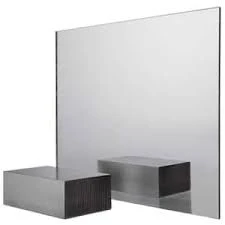

Understanding Low-E 240 Glass A Comprehensive Guide
In the world of energy-efficient building materials, low-emissivity (Low-E) glass has gained significant attention for its remarkable properties. Among the various types of Low-E glass available, Low-E 240 glass stands out due to its unique design and performance benefits. This article aims to explore the characteristics, applications, and advantages of Low-E 240 glass, shedding light on why it is an excellent choice for both residential and commercial structures.
What is Low-E Glass?
Low-E glass is a type of energy-efficient glazing that has been coated with a thin layer of metal or metallic oxide. This coating reflects infrared energy while allowing visible light to pass through. The primary function of Low-E glass is to minimize the amount of heat transferred through the glass, thereby enhancing a building’s energy efficiency. Low-E 240 glass specifically refers to glass that is optimized for performance in moderate to cold climates, providing superior thermal insulation.
Key Characteristics of Low-E 240 Glass
1. Thermal Performance Low-E 240 glass has been engineered to reflect a significant amount of infrared radiation, which is responsible for heat loss in buildings. This property helps maintain comfortable indoor temperatures, reducing the reliance on heating systems during colder months.
2. Visible Light Transmission One of the distinguishing features of Low-E 240 glass is its ability to transmit high levels of visible light. This means that while it efficiently reflects infrared heat, it still allows ample natural light to illuminate indoor spaces, contributing to a pleasant living or working environment.
3. UV Protection Low-E 240 glass offers additional benefits by blocking a substantial portion of ultraviolet (UV) rays. This protection helps prevent fading of interior furnishings, artworks, and flooring, extending their lifespan and maintaining the aesthetic appeal of indoor spaces.
4. Condensation Resistance The thermal performance of Low-E 240 glass also leads to reduced condensation on the interior surface, which is particularly beneficial in environments with high humidity levels. This quality minimizes the risk of mold growth and enhances indoor air quality.
Applications of Low-E 240 Glass
Low-E 240 glass is suitable for a wide range of applications, including
- Residential Windows Homeowners can benefit from the energy-saving characteristics of Low-E 240 glass, which can lead to reduced utility bills and an increased comfort level within the home.

- Commercial Buildings In commercial settings, Low-E 240 glass is invaluable for large windows and curtain wall systems, where energy efficiency and natural light are essential.
- Skylights This type of glass is also ideal for skylights, allowing buildings to harness daylight while maintaining excellent thermal control.
- Glass Doors Exterior glass doors featuring Low-E 240 glass can enhance the overall energy efficiency of a building without sacrificing aesthetics.
Benefits of Using Low-E 240 Glass
Choosing Low-E 240 glass for your building project comes with numerous advantages
1. Energy Savings The reduction in heating and cooling costs can result in substantial long-term savings. This is particularly beneficial for both homeowners and businesses looking to minimize operational expenses.
2. Enhanced Comfort By maintaining consistent indoor temperatures and reducing glare from sunlight, Low-E 240 glass contributes to a more comfortable living or working environment.
3. Environmental Impact Opting for energy-efficient materials like Low-E 240 glass not only benefits individual owners but also contributes to larger environmental goals by decreasing energy consumption and lowering carbon emissions.
4. Increased Property Value Energy-efficient buildings are increasingly desirable in the real estate market, making properties fitted with Low-E 240 glass more attractive to potential buyers.
Conclusion
Low-E 240 glass represents a remarkable advancement in building materials, offering an array of benefits from energy efficiency to aesthetic appeal. By reflecting infrared radiation while allowing for ample light transmission, it serves as an ideal choice for anyone looking to create a comfortable, sustainable living or working space. Whether for new constructions or renovations, integrating Low-E 240 glass can significantly enhance a building's performance and value. As the demand for energy-efficient solutions continues to grow, Low-E 240 glass is poised to play a crucial role in shaping the future of architecture and design.